The first reports from this year’s annual Focus Canada survey – on the U.S. election and on immigration – have received their fair share of attention. Both reports mentioned, as background, the worsening public mood, but it’s worth taking a moment to focus on that finding in more detail.
Here’s the overall trend, based on the following question: overall, are you satisfied or dissatisfied with the way things are going in our country today?
We’ve been asking this question for almost 20 years. For the first 10 years or so, satisfaction typically outweighed dissatisfaction by about 20 percentage points. Satisfaction then fell sharply in the first half of 2019, briefly recovered, and then fell again 2021. In 2021 and 2022, Canadians were evenly split between those who were satisfied and those who were dissatisfied with the way things were going in the country.
But in 2023, satisfaction fell again, and – for the first time – the lines crossed. Since 2023, dissatisfaction has outweighed satisfaction by a little over 20 points.
Dissatisfaction has increased by 24 percentage points over a short three-year period, from a low of 34 percent in 2020 (yes, that was during the pandemic), to a high of 58 percent in 2023 – and it remains almost as high today.
So much for the overall trend. Now let’s break things out by region, age and vote intention.
Regionally, there are two main outliers. The first is Quebec.
Satisfaction in Quebec fell sharply (by 17 points) at the start of the period covered here (2006 – 2012), but rebounded following the change of federal government (and prime minister) in 2015. The level of satisfaction in the province moved from being the lowest among all regions in 2012, to the highest in 2018. But, while it remains above average, it nonetheless experienced a sharp 20-point drop in 2023 – and has now returned to the level it was when the Harper government held office.
There are two stories here. On the one hand, Quebecers remain more satisfied than the Canadian average. On the other hand, both the federal and the Quebec government face a public mood in Quebec that is much more negative that it was as recently as two years ago.
I’m going to skip over Atlantic Canada, Ontario and B.C. because their results stick close to the national average. There is second outlier to highlight, however, namely Alberta.
In the late 2010s, Alberta basically switched places with Quebec: Albertans flipped from being the most to the least satisfied group in the country. The level of satisfaction in the province has remained very low since then (even if it is surpassed in 2024 by a lower score in Manitoba and Saskatchewan (combined)).
Because I like the contrasts between Alberta and Quebec so much, here’s the chart again, showing only these two provinces.
The story is more straightforward when it comes to age, because each age group is moving in the same direction. People in every age group are less likely to be satisfied today than they were prior to the Spring of 2019.
But, while the direction of the change is the same for each age group, the drop in satisfaction is more pronounced for those in youngest group (age 18 to 29). Their level of satisfaction has dropped by 35 points since the high point in 2017. You’ll notice there’s been a convergence among the groups: younger Canadians used to be more satisfied than their older counterparts, but this is no longer the case.
Keeping in mind that Canadians in all age groups have become less likely to express satisfaction with the direction in which the country is headed, and that there is currently little difference among them in their outlook, it’s nonetheless telling to zero in on the trend for the youngest group. The dramatic change in their perspective over the past four years is all too obvious.
Finally, how do things look by federal vote intention? It’s no surprise to find that Liberal Party supporters are the most satisfied with the way things are going in the country today, that Conservative Party supporters are the least satisfied, and that supporters of the other main parties are somewhere in between. But it’s striking to see, not just how low satisfaction among Conservative Party supporters has fallen, but also how much lower it currently is, compared to how Liberal Party supporters felt prior to 2015, when the Conservative Party held power.
The other observation to make is that, after at first holding steady, the level of satisfaction among Liberal Party supporters has started to edge down. While it’s still comparatively high, it’s no higher today than it was when Stephen Harper, rather than Justin Trudeau, was prime minister.
The data in this post are from the Environics Institute’s Focus Canada surveys; details of the methodology of all our surveys are available on our website. The 2024 survey was conducted in partnership with the Diversity Institute at Toronto Metropolitan University, and with the ongoing support of Century Initiative. This survey is based on telephone interviews conducted (via landline and cellphones) with 2,016 Canadians between September 9 and 23, 2024.
What is the Environics Institute for Survey Research? Find out by clicking here.
Follow us on other platforms:
· Twitter: @Environics_Inst or @parkinac
· Instagram and Threads: environics.institute
Cover photo credit: Kampus Production



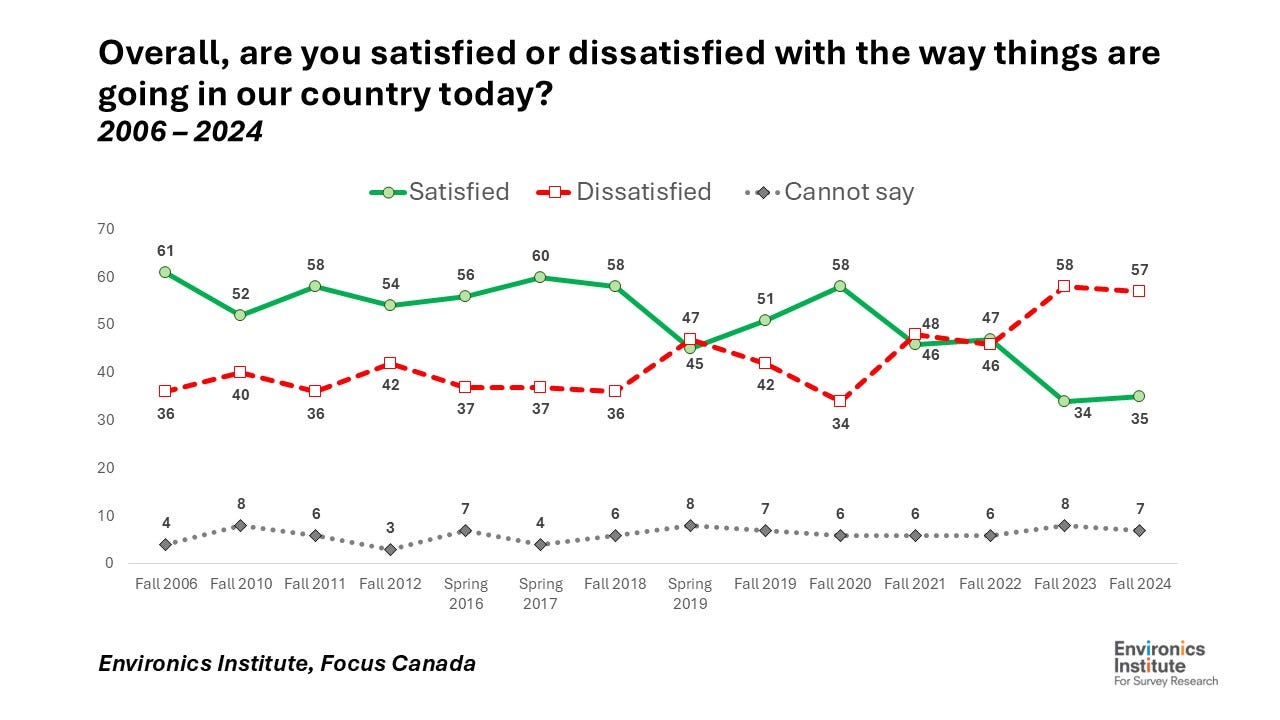
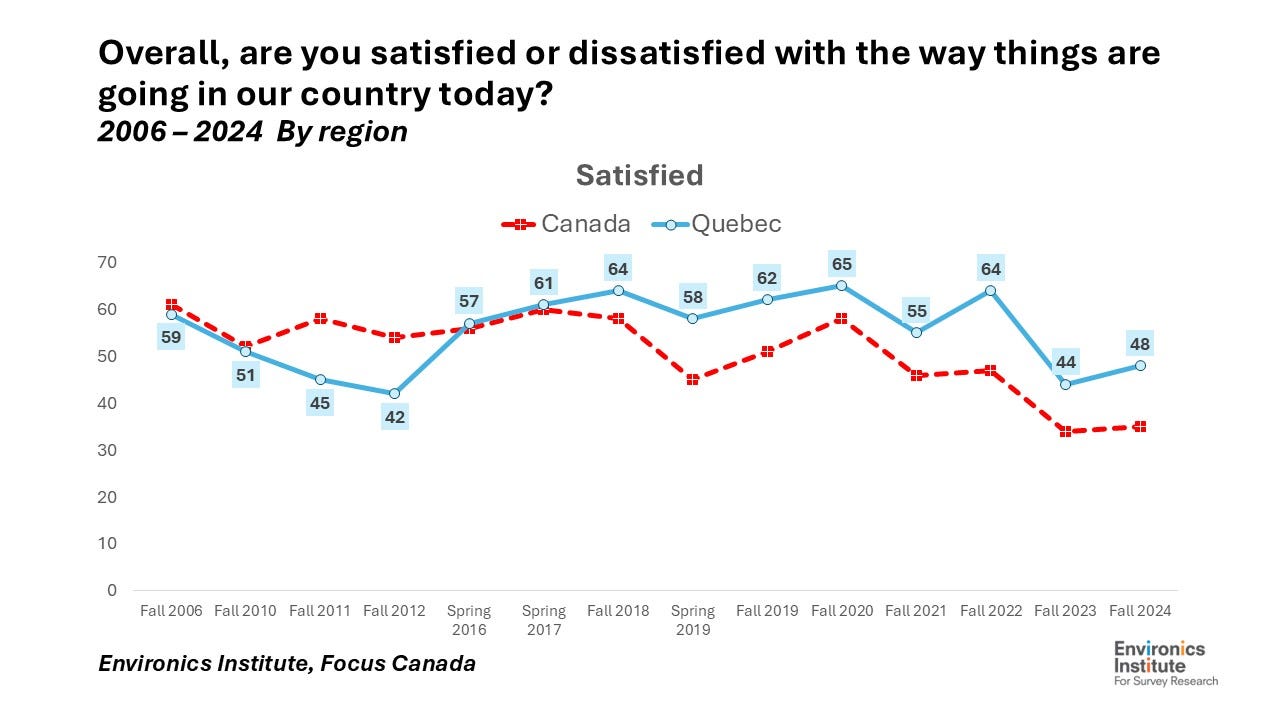
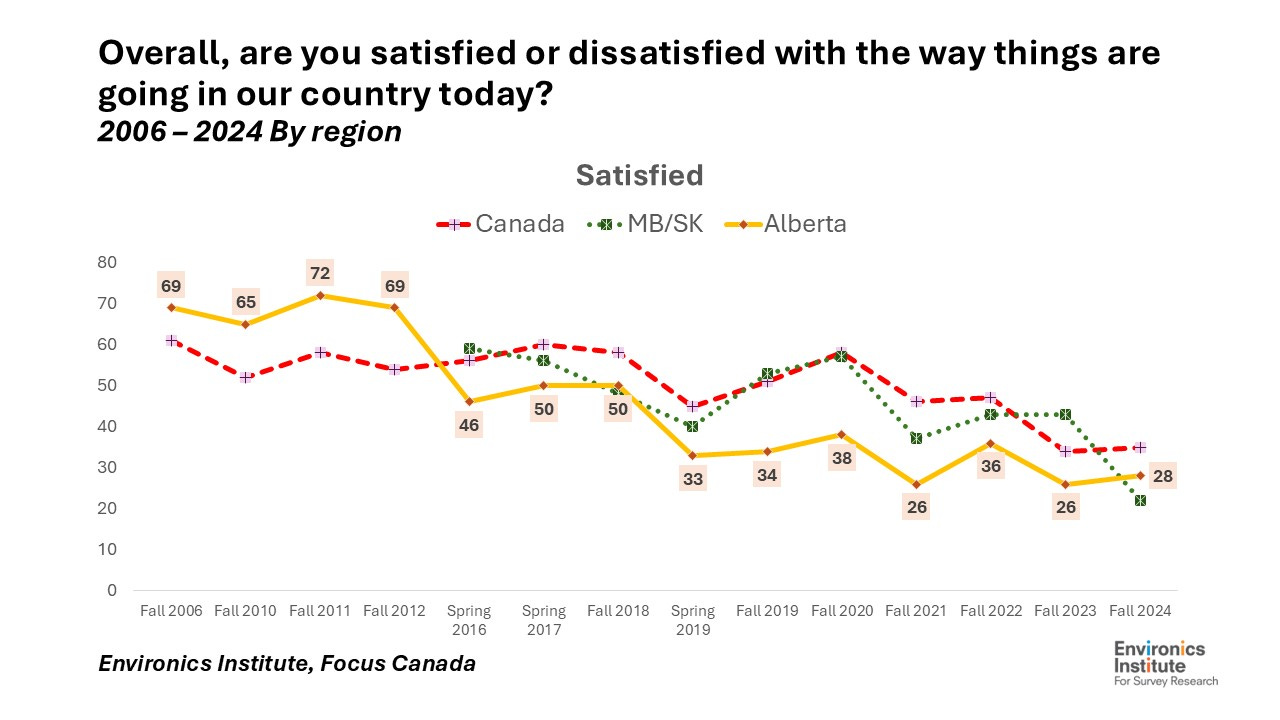
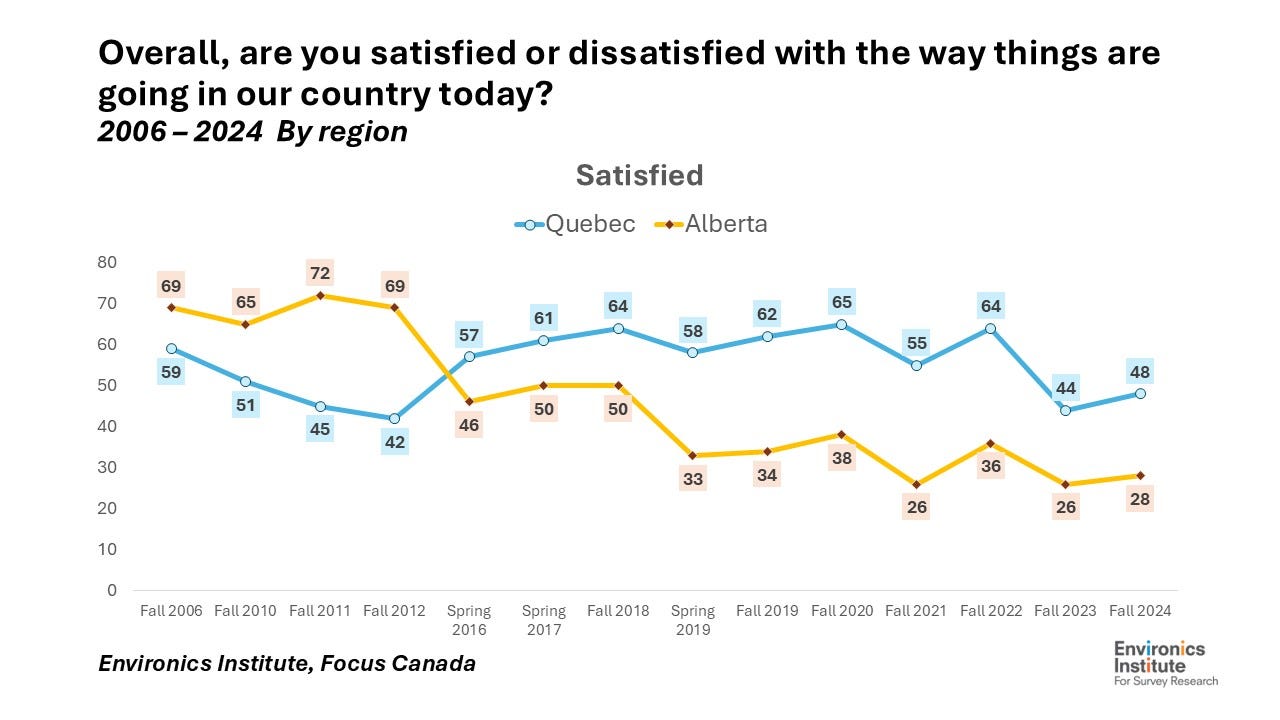
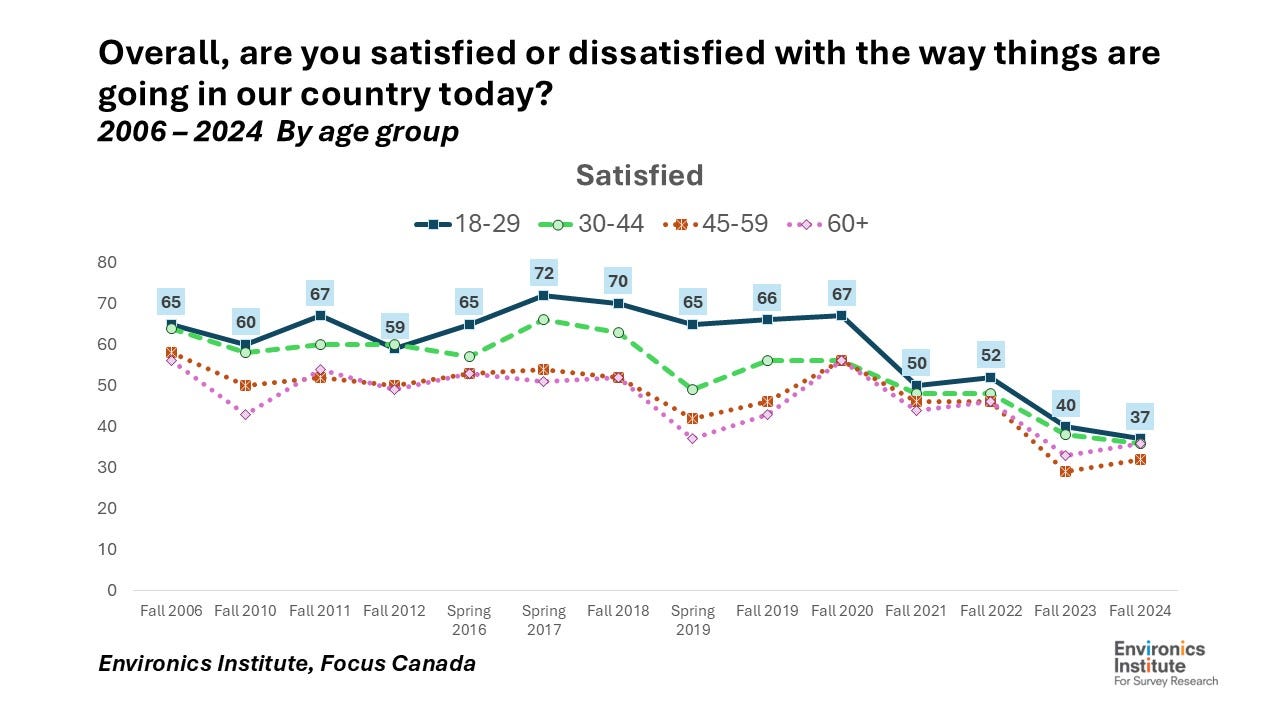
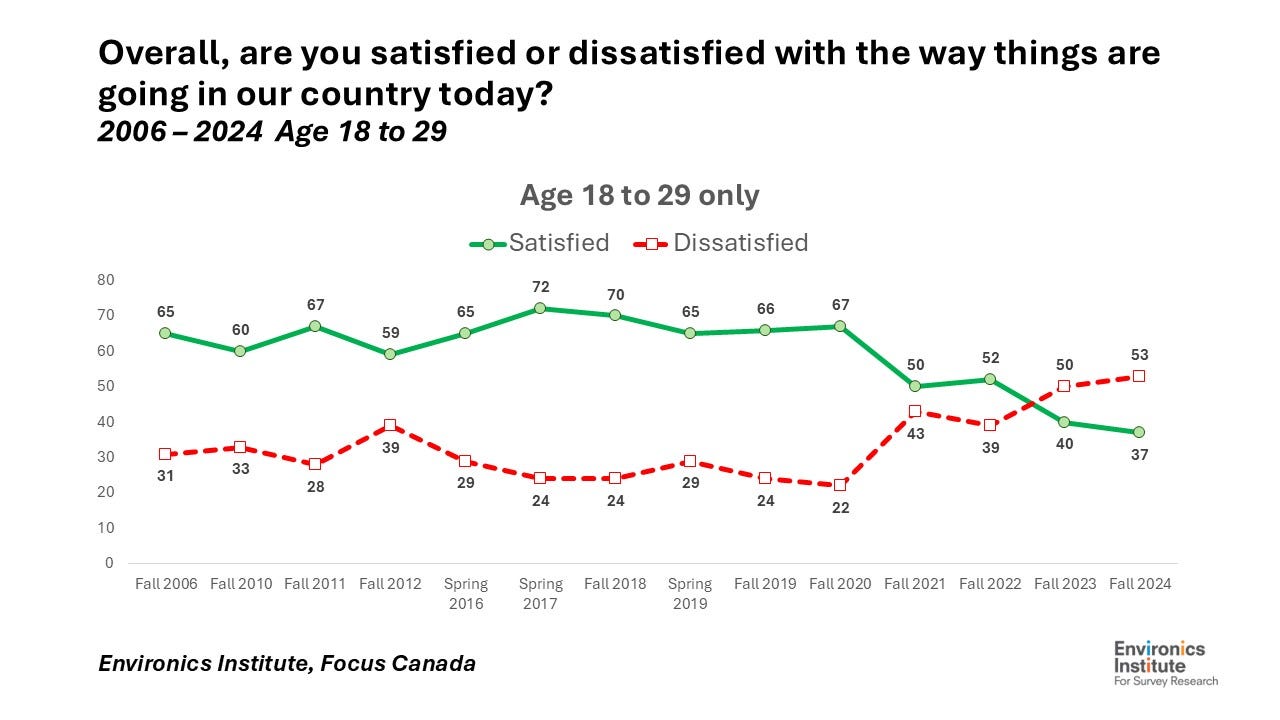

Doesn't bode well for the Liberals is my take.
The sudden jump downward in Alberta when Trudeau was elected tells you how people are just dissatisfied to see that wrong face in the news.
Paul Krugman posted the most amazing chart about the "vibesession":
https://paulkrugman.substack.com/p/a-win-for-the-vibecession-story
...scroll down to the simple bar chart of the total reversal, negative to positive, to the question of "are you better off now than 5 years ago"...in a single month. They were happy Trump was elected, and now see themselves as better off, instantly.
There's no understanding of this; you have to accept it and work with it.